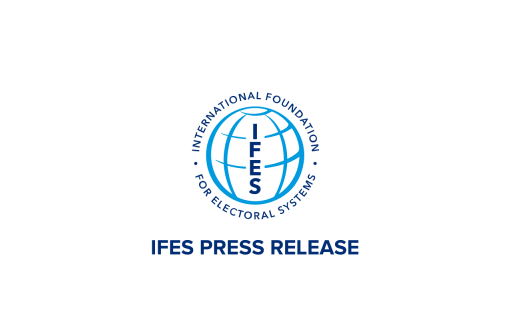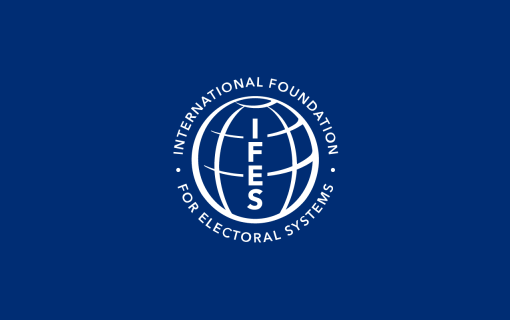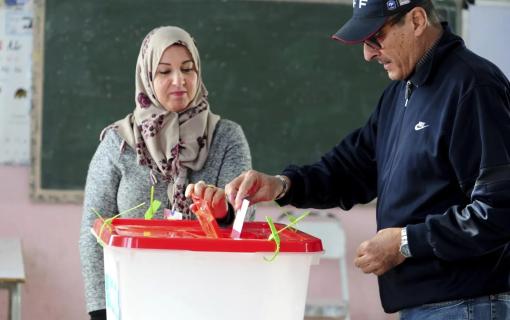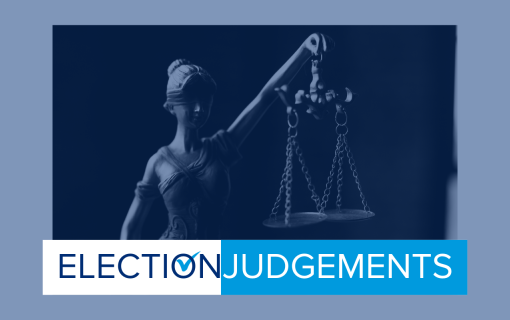Egypt’s First Free Presidential Election
Fifteen months after the ouster of President Hosni Mubarak, Egypt held what is considered to be the first free presidential election in the country’s history. Over the span of two days, citizens all across the country queued to cast their vote for one of the 13 candidates on the ballot. Antonio Spinelli, IFES Country Director in Egypt, comments on the momentous election.
How was the overall mood of the Egyptian electorate on two election days?
On May 23 and 24, Egyptians voted in what is considered to be the first free and fair presidential election in their country's history. The mood at the polling stations was cheerful; for many voters, this was the first real chance in a lifetime to meaningfully select their leader. Aside from minor isolated incidents, the presidential vote was largely calm over both polling days. People remained orderly despite the crowds; while competition among front-running candidates was high, their supporters refrained from resorting to violence.
Were the polling stations open on time?
Most polling stations throughout Egypt opened on time, at 8:00 a.m. A few exceptions were reported where judges were late and the opening was delayed by 20-40 minutes. As a measure to accommodate queuing voters and to maximize overall voter turnout, the Supreme Presidential Election Committee (SPEC) decided to extend the hours of polling stations by one hour, until 9:00 p.m., on both days.
How was the overall voter turnout?
Voter turnout for the first round of the presidential elections was lower than expected, with early indications that approximately 45 percent of the Egyptian electorate participated. Notably, on both election days, voter attendance at polling stations was higher in the earlier hours of the morning and the evening, with a decrease in the early afternoon during the hottest hours. As opposed to the last parliamentary elections when most of the voters voted on the first day, this time many voters opted to vote on the second day, probably to avoid overcrowded polling stations.
The processing of voters by poll workers appeared more organized and faster on the second voting day, probably indicating that poll workers improved their performance through practice on the first day.
Despite the drastic decrease in the number of polling stations compared to those established for the last parliamentary elections (from more than 50,000 to approximately 13,000), access by voters to the polling stations was not as problematic as previously experienced. Lines of voters could be seen outside the polling stations, however they were not excessively long and voters were processed fairly quickly.
On average, it took between two to three minutes for a single voter to go through the whole voting process after waiting in line. The overall simplicity of the choice (a single ballot paper with only 13 candidates) made the voting operation smoother and quicker than the complex voting system established for the parliamentary elections.
What were the main procedural improvements compared to previous elections?
One of the most visible improvements compared to previous elections was the drastic reduction of electoral campaign activities in front of the polling centers, which is legally prohibited. The SPEC issued clear instructions to security forces to remove all electoral campaign materials from the proximity of the polling centers and to prevent candidates’ supporters from attempting to influence voters as they accessed the polling centers.
Also, large posters containing voter lists were visibly displayed outside the polling stations and throughout the polling centers, so voters could identify their unique sequencing number, which would expedite the identification process once inside the polling station. This measure helped make the voting process quicker, since voters could then be easily directed to the correct section on the voter lists.
Open voting, a practice more commonly experienced in the parliamentary elections, was observed to have markedly decreased due to increased use of polling booths and increased attention by judiciary supervisors to admitting fewer voters inside the polling stations at the same time.
Overall, judiciary supervisors and poll workers appeared to be fully aware of their duties, using greater consistency in the application of procedures than in past elections, though some exceptions were noted.
The SPEC introduced a number of procedural improvements and security safeguards to greatly enhance the integrity of the voting and counting processes. These include the use of new ballot boxes with serially numbered plastic seals, and the use of tamper-evident envelopes and seals for the storage and transport of sensitive materials (such as used and unused ballot papers) from the polling stations to the general election committees at the governorate level and above.
When will the final results for the first round of the elections be announced?
Votes were counted at the polling stations; this differed from the parliamentary elections, when the ballot boxes were transported to counting centers where votes were tabulated. The approach used for the presidential election increased the likelihood that the votes will be counted, and results announced, in a timely fashion.
The tabulation of votes is expected to be completed by May 26. The SPEC has three days to review and adjudicate all appeals, so final results are expected to be announced on May 29.
Early projections indicate that a run-off election among the top two candidates of the first round is likely. If so, the run-off election will take place on June 16 and 17.
When will the president-elect take office?
The final results of the run-off election are expected to be announced on June 21 and the president-elect is expected to assume office by June 30.









